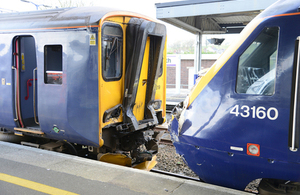
To accompany those Lone Star coaches and wagons I blogged about a while back, I’ve now managed to obtain a pair of British outline locomotives to go with them. Both of them came via eBay, advertised as factory clearance, unboxed but in near mint condition at what appeared to be a very reasonable price.
They’re both models of the then very recently-introduced Modernisation Plan diesels. The upper model is an English Electric class 23 “Baby Deltic”, of which just ten of the real life version were built, and lasted little over a decade in service. My childhood train set included one of these, and I remember the Ian Allan ABC books for 1969 and 1970 showing just two remaining in service. I never saw the full-sized locomotives in action.
The second loco is a model of the Derby/Sulzer class 24. The full-sized versions of these were far more numerous, and I always associate them with 1970s family holidays in mid-Wales, when they appeared on freight and mail working on the Cambrian lines.
Since production ceased in the mid 1960s, these models have persumably been in storage somewhere for something like fifty years. They are complete, but giving the length of time they’ve been stored they may take a bit of work to get them running.

By comparison, the middle locomotive is a far more recent Graham Farish model of the class 24, painted in the later BR Blue livery I remember from those Welsh holidays. Considering there’s something like fifty years separating the two 24s, it suggests Lone Star were a long way ahead of their time when they introduced the range.
In retrospect, they were perhaps too far ahead of their time. The design used a large central motor that extended down into the fuel tank between the bogies, and it just wasn’t possible to motorise a British outline steam locomotive using the technology they had in 1960. So they launched an all-diesel range at a time when the real railway, though changing fast, was still largely operated by steam, long before “Modern Image” was a thing. It interesting to speculate where the range might have gone had they continued with it.










 The next model from
The next model from 
